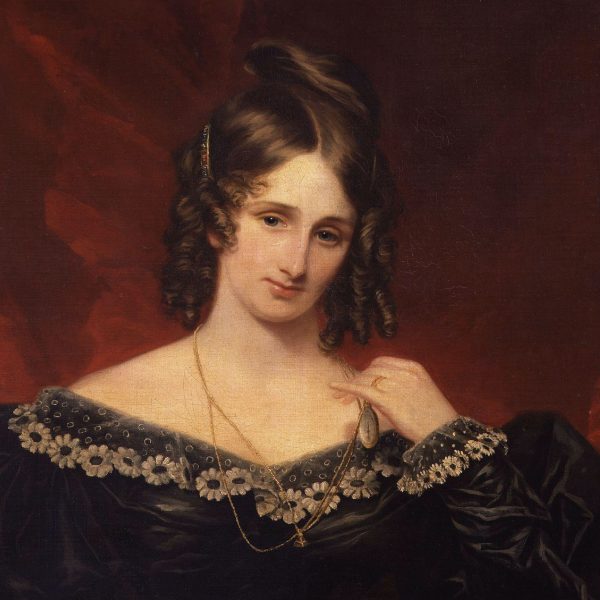Mary Shelley believed in the sanctity of life. She proved that in Frankenstein, her poignant, horrific gothic novel published on January 1st, 1818. Her father was the political philosopher William Godwin, and her mother was the philosopher and feminist Mary Wollstonecraft.
The Godwin household had a number of distinguished guests during Shelley’s childhood, including Samuel Taylor Coleridge and William Wordsworth. While she didn’t have a formal education, she did make great use of her father’s extensive library. Shelley could often be found reading, sometimes by her mother’s grave. She also liked to daydream, escaping from her often challenging home life into her imagination.
Mary Godwin began a romantic relationship with one of her father’s political followers, the married Percy Bysshe Shelley. Together with Mary’s stepsister, Claire Clairmont, they left for France and travelled through Europe. When they returned to England, Mary was pregnant with Percy’s child. Over the next two years, she and Percy faced ostracism, constant debt, and the death of their prematurely born daughter. They married in late 1816 after the suicide of Percy Shelley’s first wife, Harriet.
In 1816, the couple famously spent a summer with Lord Byron, John William Polidori, and Claire Clairmont near Geneva, Switzerland, where Mary conceived the idea for her novel Frankenstein. The family left Britain in 1818 for Italy, where their second and third children died before Mary Shelley gave birth to her last and only surviving child, Percy Florence Shelley. In 1822, her husband drowned when his sailing boat sank during a storm near Viareggio. A year later, Mary Shelley returned to England and from then on devoted herself to the upbringing of her son and a career as a professional author. The last decade of her life was dogged by illness, probably caused by the brain tumor that was to kill her at the age of 53 on February first, 1851.
Until the 1970s, Mary Shelley was known mainly for her efforts to publish her husband’s works and for her novel Frankenstein, which remains widely read and has inspired many theatrical and film adaptations. Recently scholars have shown increasing interest in her other literary output, particularly in her novels, which include the historical novels Valperga (1823) and Perkin Warbeck (1830), the apocalyptic novel The Last Man (1826), and her final two novels, Lodore (1835) and Falkner (1837).
There have been many adaptations of the original Frankenstein novel, the most famous is Boris Karloff’s which was a huge success but had little to do with the original novel. The closest we’ve come to Mary Shelley’s work is Kenneth Branagh’s Mary Shelley’s Frankenstein (1994) and that is still a very loose version, as if Branagh wanted to keep some of the novel and some of the horror of other popular film iterations. Another great adaptation is Mel Brooks parody starring the inimitable Gene Wilder as Frankenstein’s reluctant grandson. It is wonderful. We enjoy the characters’ chemistry as they navigate the murky teacher/student, parent/child relationship, as well as an all-singing, all-dancing rendition of ‘Puttin’ On The Ritz’. Even Mary Shelley herself would have loved.
by Neil Healy







